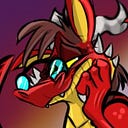Building Enterprise Apps with Unity
Now that we’ve learned how to connect with Amazons AWS, it’s time to learn how to build an app in Unity. One normally associates Unity with games, but it is an all around application writing environment. Not only do you have a strong UI environment, but the skys the limit on how you can create interactions using Unitys scene environment tools!
That said, We’re given several pdfs that show us how the app should look and the navigation tree on how the user experience is mapped. We’re going to build our app on these specifications.
Let’s begin with the background:
We’ll begin by creating a UI Image, it will automatically create the necessary Canvas and Event system with it. The Canvas is of course the element that contains all of the UI such as images, buttons, text, etc. The event system is what handles the button presses, finger taps, and whatever user interactions are made with the UI.
Next, we’ll rename the image to background, change the anchorpoint to stretch, and 0 out the rect transform so it fills the screen.
Finally, let’s put our background image in the sprite slot.
Next we’ll put the logo in, but first, since we’re going to have many screens or virtual pages in our app, we can seperate them using UI Panels for each one. Let’s create a panel for the main menu and we’ll rename it to Main_Menu_Panel
Next we’ll remove the image component and drag the background into it.
According to the artboards, the logo should take up the upper 50 percent of the screen and buttons at the bottom 50%.
Let’s create a new ui image and call it Logo, we’ll also anchor stretch it from the center, and zero out the rect like before. The logo wasn’t set to sprite so I had to quickly change its type in the example.
We can fix the stretchy umbrella by clicking on preserve aspect. I then used Unitys move and scale tools to move it up to where it looked good.
Hmm..needs to be a bit smaller.
Ok, I think that’s good, now to add the buttons. First we add a new image, stretch anchor it to the center, have it fill around 40–45 percent of the screen and finally drag a gray background into it.
Next create a button and drag the button image into it, and preserve aspect ratio, stretch-center anchor it, then resize it to be similar to the artboards.
Rename the buttons to Find_Case_Number_Button and Create_Case_Number_Button, and then change the button texts to reflect the same info, “FIND CASE #”, and “CREATE A CASE”.
We’ve created our first panel, and I think that’s where I’ll leave things for today. But as you can already see, while Unity can make some of the best games in the market, since its foundational programming language is C#, it’s also more than capable of helping create professional applications across the entire spectrum of devices, from mobile to desktop as well!
